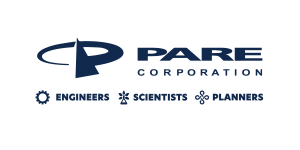Earth Dam Failures
Contents
- Overtopping Failures
- Seepage Failures
- Structural Failures
- Combined Failures
- Dam Owner Academy
- Save this page as a printable Dam Owner's Fact Sheet [PDF]
Owners of dams, operating personnel, and maintenance personnel must be knowledgeable of the potential problems which can lead to dam failure. These people regularly view the structure and, therefore, need to be able to recognize potential problems so that failure can be avoided. If a problem is noted early enough, an engineer experienced in dam design, construction, and inspection can be contacted to recommend corrective measures, and such measures can be implemented.
If there is any question as to the seriousness of an observation, an engineer experienced with dams should be contacted.
Acting promptly may avoid possible dam failure and the resulting catastrophic effect on downstream areas.
Since only superficial inspections of a dam can usually be made, it is imperative that owners and maintenance personnel be aware of the prominent types of failure and their telltale signs. Earth dam failures can be grouped into three general categories: overtopping failures, seepage failures, and structural failures. A brief discussion of each type follows.
Overtopping Failures
Overtopping failures result from the erosive action of water on the embankment. Erosion is due to uncontrolled flow of water over, around, and adjacent to the dam. Earth embankments are not designed to be overtopped and therefore are particularly susceptible to erosion. Once erosion has begun during overtopping, it is almost impossible to stop. A well vegetated earth embankment may withstand limited overtopping if the dam's crest is level, the downstream slope of the dam is uniform with a consistent slope gradient, and there are no bare areas or undulations along the surface of the dam. The owner should closely monitor the reservoir pool level during severe storms.
Seepage Failures
All earth dams leak to some extent and this is known as seepage. This is the result of water moving slowly through the embankment and/or percolating slowly through the dam's foundation. This is normal and usually not a problem with most earthen dams if measures are taken to control movement of water through and under the dam. If uncontrolled, seepage can progressively erode soil from the embankment or its foundation, resulting in failure of the dam. Typically, erosion of embankment soil begins at the downstream side of the dam and progressively works toward the reservoir eventually developing a path to the reservoir which is referred to as "piping." Piping action can be recognized by an increased seepage flow rate, the discharge of muddy or discolored water, sinkholes on or near the embankment, and possibly a whirlpool at the surface of the reservoir. Once a whirlpool (eddy) is observed, failure of the dam may follow. As with overtopping, fully developed piping is virtually impossible to control and will likely cause failure.
Seepage can also cause dam failure by saturating the embankment, thus weakening the dam, or by increasing internal pressure within the embankment. Saturation and internal pressure within the dam are difficult to determine without proper instrumentation.
Structural Failure
Structural failure typically refers to the collapse of non-earthen embankment dams such as those made from concrete, masonry, or other materials not consisting of a soil matrix. In addition, failure of a dam's appurtenant structures such as a concrete chute spillway slab, gate structures and components, or other such features may lead to failure of the dam itself. Earthen dams do not tend to collapse or fail catastrophically on their own except where earthquakes of significant magnitude are prevalent or other erosive forces weaken the structure. Large cracks in an earthen embankment, major settlement, and major slides may require emergency measures to ensure safety, especially if these problems occur suddenly. If this type of situation occurs, the lake level should be lowered, the appropriate state and local authorities notified, and professional advice sought. If the observer is uncertain as to the seriousness of the problem, a qualified professional engineer with experience in dam safety should be contacted immediately.
Combined Failures
The three types of failure previously described are often interrelated in a complex manner. For example uncontrolled seepage may weaken the soil and lead to a structural failure. A structural failure may shorten the seepage path and lead to a piping failure. Surface erosion may result in structural failure.
Minor defects such as cracks in the embankment may be the first visual sign of a major problem which could lead to failure of the structure. The seriousness of all deficiencies should be evaluated by someone experienced in dam design and construction. A qualified professional engineer can recommend appropriate permanent remedial measures.
Dam Owner Academy
The Dam Owner Academy is a series of videos to educate and inform owners on all aspects of operating and maintaining a dam safely. The videos concisely present the critical basics of owner responsibilities and are available as a free resource for owners and those conducting owner outreach programs.
The "Learning From Dam Failures" video covers earth dam failures.


































